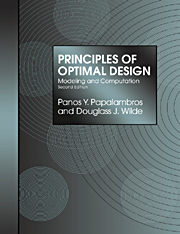3 - Model Boundedness
Summary
The dragon exceeds the proper limits; there will be occasion for repentance.
The Book of Changes (Yi Qing) (c. 1200 b.c.)In modeling an optimization problem, the easiest and most common mistake is to leave something out. This chapter shows how to reduce such omissions by systematically checking the model before trying to compute with it. Such a check can detect formulation errors, prevent wasteful computations, and avoid wrong answers. As a perhaps unexpected bonus, such a preliminary study may lead to a simpler and more clearly understandable model with fewer variables and constraints than the original one.
The methods of this chapter, informally referred to as boundedness checking, should be regarded as a model reduction and verification process to be carried out routinely before attempting any numerical optimization procedure. At the same time, one should be cautious about the limitations of boundedness arguments because they are based on necessary conditions, namely mathematical truths that hold assuming an optimal solution exists. Such existence, derived from sufficient conditions, is not always easy to prove. The complete optimality theory in Chapters 4 and 5 provides important additional tools to those presented in this chapter.
The chapter begins with the fundamental definitions of bounds and optima, allowing a precise definition of a well-bounded model. Since poor model boundedness is often a result of extensive monotonicities in the model functions, the boundedness theory presented here has become known as Monotonicity Analysis.
- Type
- Chapter
- Information
- Principles of Optimal DesignModeling and Computation, pp. 87 - 127Publisher: Cambridge University PressPrint publication year: 2000
- 1
- Cited by



